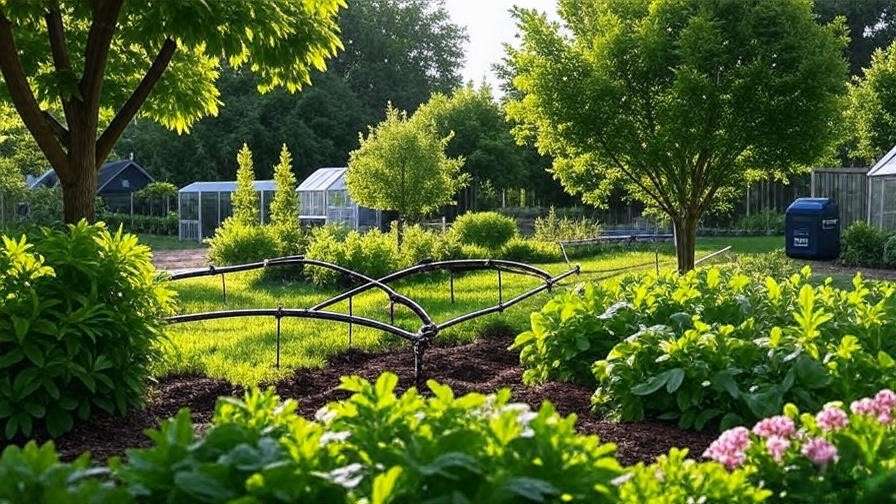Picture this: Your trees are lush, vibrant, and thriving, even in the hottest summer, with minimal effort and water waste. Sound like a dream? It’s not! Drip irrigation for trees can make this a reality, transforming your landscape while saving water and nurturing healthier roots. Many homeowners and gardeners struggle with inefficient watering methods that lead to stressed trees, wasted resources, or costly water bills. This comprehensive guide will walk you through everything you need to know about drip irrigation for trees, from setup to maintenance, ensuring your trees flourish sustainably. Ready to grow stronger trees and save the planet? Let’s dive in! 🌍
1. What is Drip Irrigation for Trees? 🌿
1.1 Definition and Core Concept
Drip irrigation is a low-pressure, precision watering system that delivers water directly to a tree’s root zone through emitters or tubes. Unlike traditional sprinklers that spray water broadly, drip irrigation targets the soil where roots absorb moisture most effectively. This method mimics natural rainfall, providing slow, steady hydration that promotes deep root growth. According to Dr. Linda Chalker-Scott, a renowned horticulturist at Washington State University, “Drip irrigation is one of the most efficient ways to water trees, reducing evaporation and runoff significantly.” It’s ideal for various climates, from arid deserts to temperate regions, and works well with diverse soil types like clay or sandy loam.
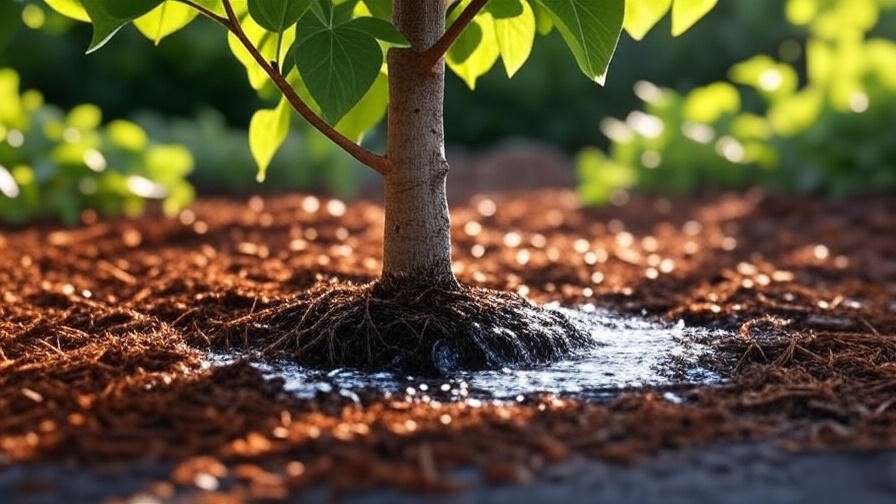
1.2 Why Trees Need Specialized Irrigation
Trees have unique water needs based on their species, age, and root structure. Shallow-rooted trees like maples require consistent moisture near the surface, while deep-rooted oaks benefit from deeper, less frequent watering. Drip irrigation ensures water reaches the root zone without flooding or drying out the soil. Overwatering, a common issue with hoses or sprinklers, can lead to root rot or fungal diseases, while underwatering stresses trees, stunting growth. Drip systems provide a balanced solution, delivering water precisely where it’s needed, ensuring trees thrive even during droughts.
2. Benefits of Drip Irrigation for Trees 🌞
2.1 Water Conservation and Sustainability
Drip irrigation is a game-changer for eco-conscious gardeners. Studies from the University of California’s Agriculture and Natural Resources division show that drip systems can reduce water usage by up to 60% compared to traditional sprinklers. By delivering water directly to the roots, it minimizes evaporation and runoff, making it perfect for drought-prone areas. For example, a homeowner in Arizona reported saving over 5,000 gallons of water annually by switching to drip irrigation for their citrus trees. This efficiency not only conserves a precious resource but also aligns with global sustainability goals, reducing your environmental footprint. 🌎
2.2 Healthier Trees and Stronger Growth
Consistent, targeted watering fosters robust root systems, which are the foundation of healthy trees. Drip irrigation promotes deep root growth, making trees more resilient to drought and wind. It also reduces the risk of overwatering-related issues like root rot or fungal infections, which can devastate trees. “Healthy roots mean healthy trees,” says certified arborist John Smith, who recommends drip irrigation for urban landscapes. Pro Tip: Adjust emitter flow rates based on tree species—low-flow for young trees and higher rates for mature ones—to optimize growth.
2.3 Cost Savings and Long-Term Value
While the initial setup cost of a drip system may seem daunting, the long-term savings are substantial. Lower water bills, reduced tree replacement costs, and minimal maintenance add up. For large properties or orchards, drip irrigation scales efficiently, saving thousands over time. A study by the Irrigation Association found that drip systems can pay for themselves within 2–3 years through water savings alone. Whether you’re nurturing a single backyard oak or an entire orchard, drip irrigation is a smart investment.
3. Types of Drip Irrigation Systems for Trees 💧
3.1 Emitter-Based Systems
Emitter-based drip systems use small devices (emitters) to release water at a controlled rate, typically 0.5–4 gallons per hour. Inline emitters are built into tubing for uniform watering, while point-source emitters are ideal for individual trees. These systems are perfect for small to medium trees like dogwoods or young fruit trees. Pros: High precision, customizable flow. Cons: Emitters can clog and require regular cleaning.
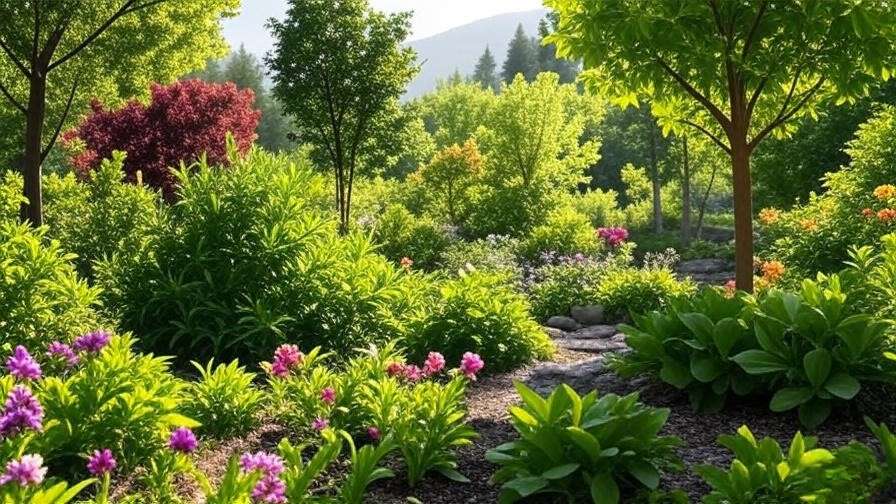
3.2 Soaker Hoses and Drip Tubes
Soaker hoses and drip tubes are flexible options for larger trees or orchards. Soaker hoses release water along their entire length, ideal for mature trees with wide root zones, like pines or pecans. Drip tubes, often used in commercial settings, can cover large areas efficiently. Pros: Easy to install, great for uneven terrain. Cons: Less precise than emitters, may require higher water pressure.
3.3 Smart Drip Systems
Smart drip irrigation systems integrate technology like timers, moisture sensors, and app-based controls. These systems adjust watering based on weather or soil moisture, perfect for busy homeowners or large-scale landscapes. For example, a smart controller can reduce watering during rainy periods, saving water and preventing over-saturation. Pros: Automation saves time and resources. Cons: Higher upfront costs but worth it for tech-savvy gardeners.
4. How to Set Up Drip Irrigation for Trees: Step-by-Step Guide 🛠️
4.1 Assessing Your Trees’ Needs
Before installing a drip system, evaluate your trees’ specific needs. Consider:
- Tree Species: Fruit trees like apples need more frequent watering than drought-tolerant species like mesquite.
- Root Depth: Young trees have shallow roots, while mature trees may need water 12–24 inches deep.
- Soil Type: Sandy soils drain quickly, requiring more frequent watering, while clay retains moisture longer.
- Climate: Arid regions demand higher water output than temperate ones.
Checklist:
- Measure the tree’s drip line (the outer edge of the canopy).
- Check soil drainage with a simple percolation test.
- Note seasonal weather patterns to adjust watering schedules.
4.2 Choosing the Right Drip Irrigation System
Select components based on your landscape and budget. Key parts include:
- Emitters: Choose 1–2 GPH for small trees, 4 GPH for larger ones.
- Tubing: Use ½-inch mainlines and ¼-inch microtubing for flexibility.
- Filters: Prevent clogs with a 150–200 mesh filter.
- Timers: Opt for battery-operated or smart timers for automation.
Trusted brands like Rain Bird, Toro, and Netafim offer durable, reliable products. Consult local nursery experts or online reviews to find the best fit for your needs.
4.3 Installation Process
Follow these steps for a successful setup:
- Plan the Layout: Map out your trees and place emitters along the drip line, 12–18 inches apart for young trees, 24–36 inches for mature ones.
- Connect the System: Attach the mainline to a water source (e.g., a faucet or irrigation valve) with a pressure regulator and filter.
- Install Emitters: Place emitters or drip rings around each tree, ensuring even coverage.
- Test the System: Run water to check for leaks or clogs and adjust emitter flow as needed.
- Secure Tubing: Use stakes to keep tubing in place and cover with mulch for aesthetics.
Common Mistake to Avoid: Don’t place emitters too close to the trunk, as this can cause root rot. Aim for the drip line for optimal absorption.
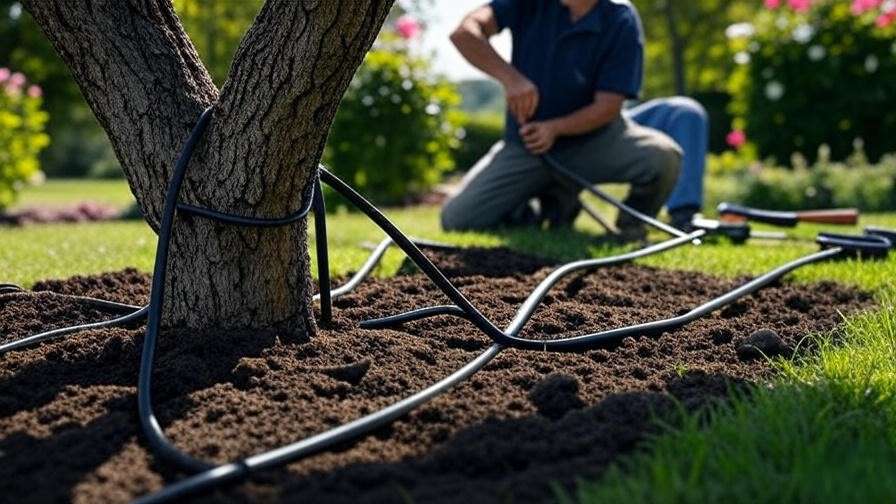
4.4 Maintenance and Troubleshooting
Regular maintenance ensures your system runs smoothly:
- Monthly: Clean filters and flush lines to remove debris.
- Seasonally: Check emitters for clogs and replace damaged tubing.
- Winterizing: Drain the system in freezing climates to prevent pipe damage.
Troubleshooting Table:
| Issue | Cause | Solution |
|---|---|---|
| Clogged emitters | Mineral buildup or debris | Soak in vinegar or replace |
| Uneven water flow | Pressure issues | Install a pressure regulator |
| Leaks | Loose fittings | Tighten or replace connectors |
5. Best Practices for Drip Irrigation Success 🌟
5.1 Watering Schedules by Tree Type
Watering needs vary by tree type. Here’s a guide:
| Tree Type | Watering Frequency | Gallons per Hour |
|---|---|---|
| Fruit Trees (e.g., Citrus, Apple) | 2–3 times/week | 2–4 GPH |
| Evergreens (e.g., Pine, Cedar) | 1–2 times/week | 1–2 GPH |
| Deciduous (e.g., Oak, Maple) | 1–2 times/week | 2–3 GPH |
Adjust for seasonal changes: Increase frequency in summer, reduce in winter. In drought conditions, prioritize deep, infrequent watering to encourage root resilience.
5.2 Soil and Mulch Considerations
Soil type impacts water retention:
- Sandy Soil: Drains quickly, so use higher-flow emitters (2–4 GPH).
- Clay Soil: Retains water, so use lower-flow emitters (0.5–1 GPH).
- Loamy Soil: Balances drainage and retention, ideal for most systems.
Apply 2–4 inches of organic mulch (e.g., wood chips) around the tree’s base to retain moisture, regulate soil temperature, and reduce weeds. Avoid piling mulch against the trunk to prevent rot.
5.3 Monitoring and Adjusting Your System
Use a moisture meter to check soil hydration levels, ensuring water penetrates 12–18 inches for mature trees. Smart controllers, like those from Rachio or Orbit, can automate adjustments based on weather data. Certified arborist Jane Doe advises, “Monitor your system weekly during the first season to fine-tune watering for optimal tree health.”
6. Drip Irrigation for Different Tree Types and Scenarios 🌲
6.1 Young Trees vs. Mature Trees
Young trees, with shallow root systems, need frequent, light watering to establish strong roots. Place a single emitter or a drip ring 6–12 inches from the trunk, delivering 1–2 gallons per hour. Mature trees, with wider root zones, require emitters spaced along the drip line (the outer edge of the canopy) to cover a larger area. For example, a mature oak may need 4–6 emitters delivering 2–4 GPH each, depending on soil and climate. Tip: Gradually increase watering radius as young trees grow to match their expanding root systems.
6.2 Fruit Trees and Orchards
Fruit trees, like citrus, apple, or mango, thrive with drip irrigation due to their high water demands during flowering and fruiting seasons. For orchards, use drip tubes or inline emitters to cover rows efficiently. A California orchard owner reported a 20% increase in apple yield after switching to drip irrigation, citing consistent moisture delivery. Adjust watering to 2–3 times per week during peak growing seasons, ensuring 10–20 gallons per session for mature fruit trees. Pro Tip: Place emitters on both sides of the trunk for even water distribution.
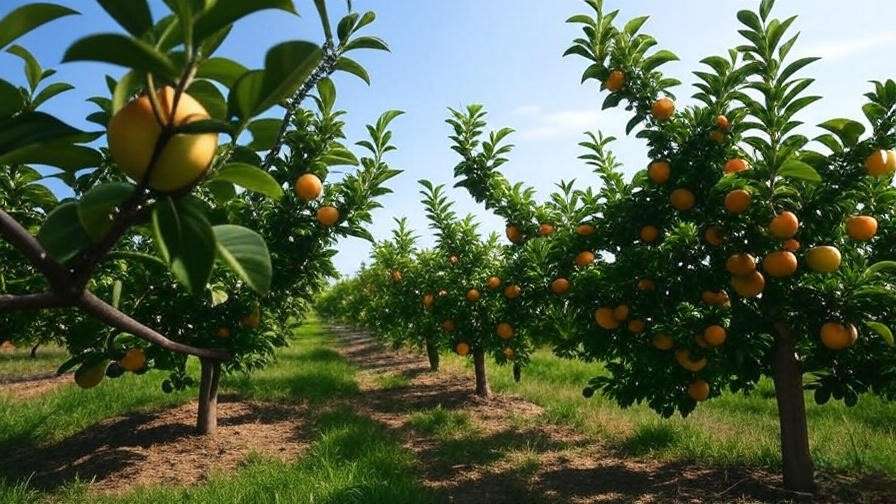
6.3 Urban and Ornamental Trees
Urban trees, like those in city parks or small backyards, face challenges like compacted soil and limited space. Drip irrigation overcomes these by delivering water directly to roots, bypassing hard surfaces. For ornamental trees (e.g., Japanese maples or flowering cherries), use low-flow emitters to avoid water pooling in tight spaces. Integrate drip lines into landscaping by covering them with mulch or decorative stones for a seamless look. Example: A Seattle homeowner transformed their urban yard with drip irrigation, keeping a row of cherry trees vibrant despite poor soil.
7. Environmental and Economic Impact of Drip Irrigation 🌍
Drip irrigation aligns with global efforts to combat water scarcity, a pressing issue as 2.7 billion people face water shortages annually, per the United Nations. By reducing water waste, drip systems help conserve this vital resource while supporting healthy tree growth, which sequesters carbon and improves air quality. A single mature tree can absorb 48 pounds of CO2 yearly, and drip irrigation ensures trees reach their full potential. Economically, drip systems lower water bills and reduce tree replacement costs due to drought stress or disease. For large-scale applications, like municipal parks or orchards, the savings are even more significant, with some cities reporting 30–50% reductions in irrigation costs.
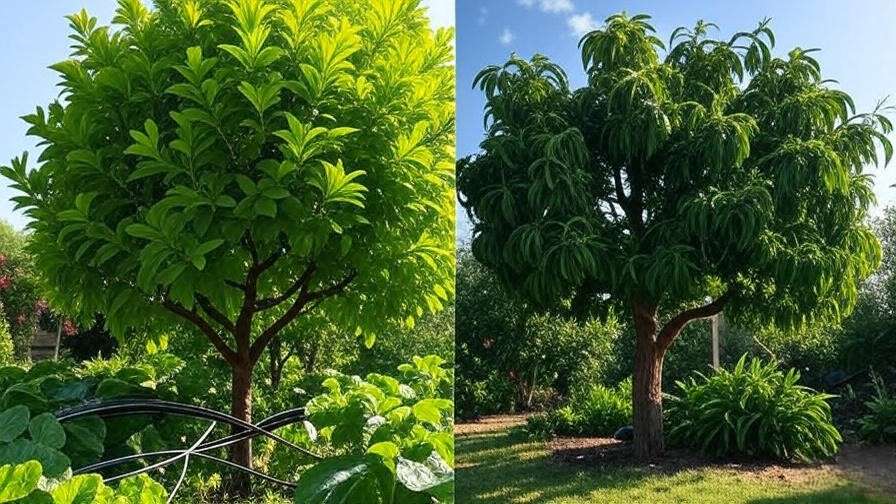
8. Common Myths and Misconceptions About Drip Irrigation 🚫
Myth 1: Drip Irrigation is Too Expensive
While setup costs range from $100–$500 for a small system, the long-term savings outweigh the investment. Water bill reductions and lower maintenance costs often recoup expenses within 2–3 years. DIY kits from brands like DripWorks make installation affordable for homeowners.
Myth 2: Drip Irrigation is Only for Farms
Drip systems are versatile, suitable for backyards, urban gardens, and large landscapes. From a single shade tree to a community orchard, drip irrigation scales to fit any need. Certified arborist John Smith notes, “Homeowners can install basic systems in a weekend with minimal tools.”
Myth 3: Drip Systems are High-Maintenance
With proper setup and regular checks, drip systems require minimal upkeep. Cleaning filters monthly and flushing lines annually prevents most issues. Smart controllers further reduce effort by automating watering schedules.
9. FAQs About Drip Irrigation for Trees ❓
Q: How much water does a tree need with drip irrigation?
A: It depends on the tree’s size, species, and climate. Young trees need 5–10 gallons per week, while mature trees may require 20–50 gallons, delivered slowly via 1–4 GPH emitters. Use a moisture meter to confirm soil hydration.
Q: Can I install drip irrigation myself?
A: Yes! DIY kits with clear instructions make installation straightforward. Basic tools (scissors, stakes) and a few hours are enough for a small system. Consult an arborist for complex setups.
Q: What’s the best drip system for a small backyard?
A: For small spaces, choose a point-source emitter system with a battery-operated timer. Brands like Rain Bird offer affordable kits for 5–10 trees.
Q: How do I prevent clogging in drip emitters?
A: Use a 150–200 mesh filter and flush lines monthly. Soak clogged emitters in vinegar for 30 minutes to dissolve mineral buildup.
Q: Is drip irrigation suitable for all tree species?
A: Yes, but adjust flow rates and schedules. Drought-tolerant trees (e.g., mesquite) need less water, while thirsty species (e.g., willows) require more frequent irrigation.
10. Conclusion: Transform Your Trees with Drip Irrigation 🌿
Drip irrigation for trees is a game-changer, offering healthier growth, water savings, and cost efficiency in one sustainable package. Whether you’re nurturing a single backyard maple or managing an orchard, this method ensures your trees thrive while conserving resources. Start small with a DIY kit or consult a local arborist to design a custom system. With the right setup, you’ll enjoy vibrant, resilient trees and contribute to a greener planet. Ready to take the plunge? Start your drip irrigation journey today and watch your trees flourish! 🌳💦

